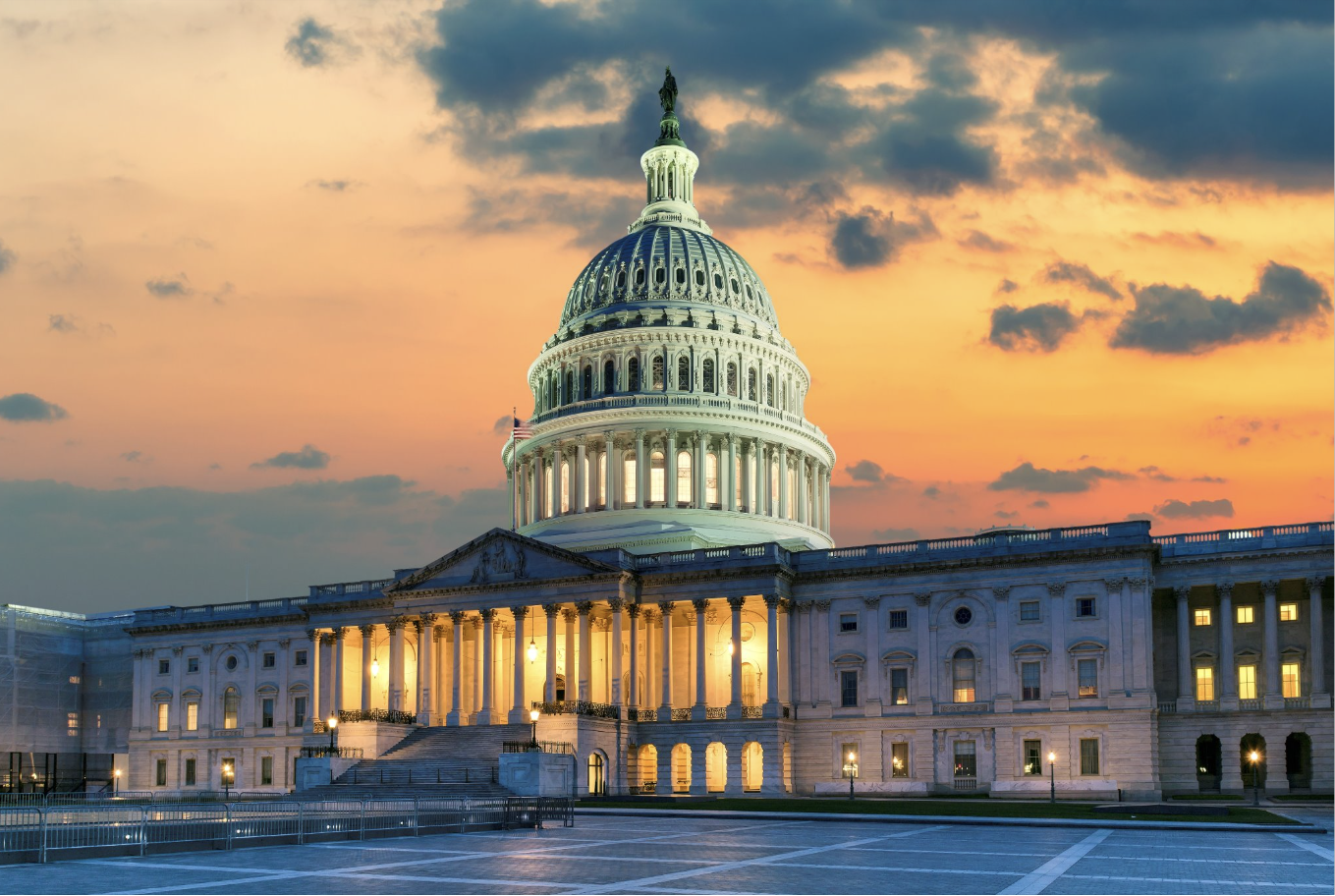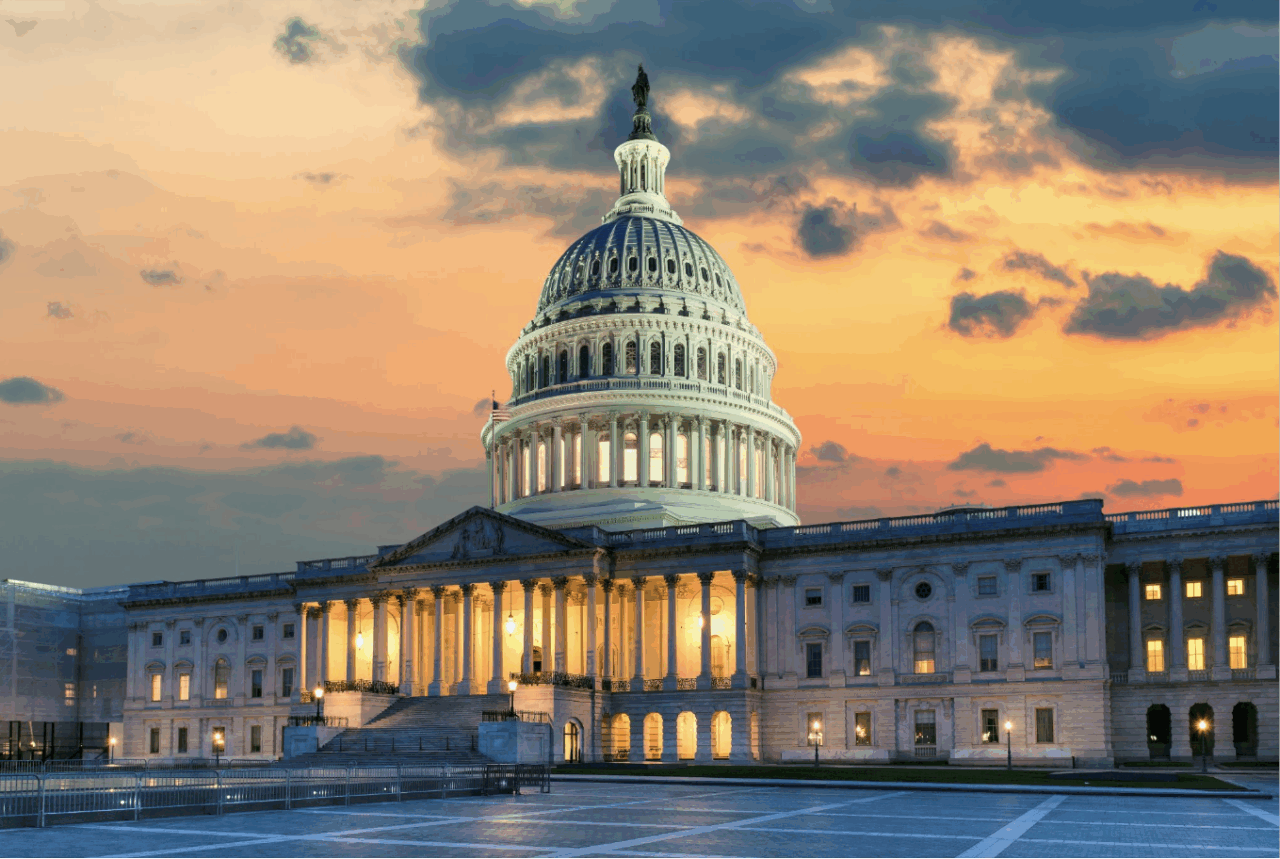Poll: Shutdown
This Navigator Research report covers the latest on how to talk about the shutdown fight.
BIG TAKEAWAYS:
- Americans want the shutdown to end, but not if it means compromising on health care.
- Stopping cuts to Medicaid and the Affordable Care Act are the top priority for Democrats, independents, and shutdown persuadables.
- Messaging increases the perception that Republicans are culpable for the shutdown.
Shutdown Context: Republicans Start With More Culpability
As a reminder: Americans start with the perception that Republicans bear more blame in the current shutdown debate. By a 13-point margin, Americans blame Republicans more for the current government shutdown (45 percent Trump and Republicans in Congress – 32 percent Democrats in Congress). Effective messaging increases this perception.
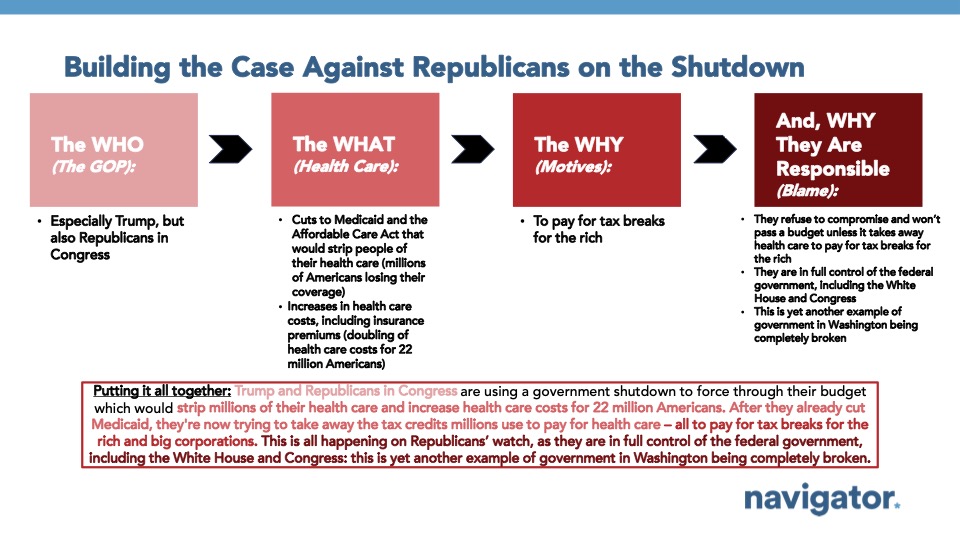
Who: Trump and Republicans
When asked who has tried to keep the government open and who has tried to shut the government down, both parties in Congress perform fairly equally. By a 3-point margin, Americans believe that Democrats in Congress have tried to keep the government open. By a 2-point margin, they believe that Republicans in Congress have tried to shut it down. Independents rate each party about evenly. However, by 8 points, Americans say Donald Trump has tried to shut the government down. As a result, effective messaging should tie the shutdown to Trump.
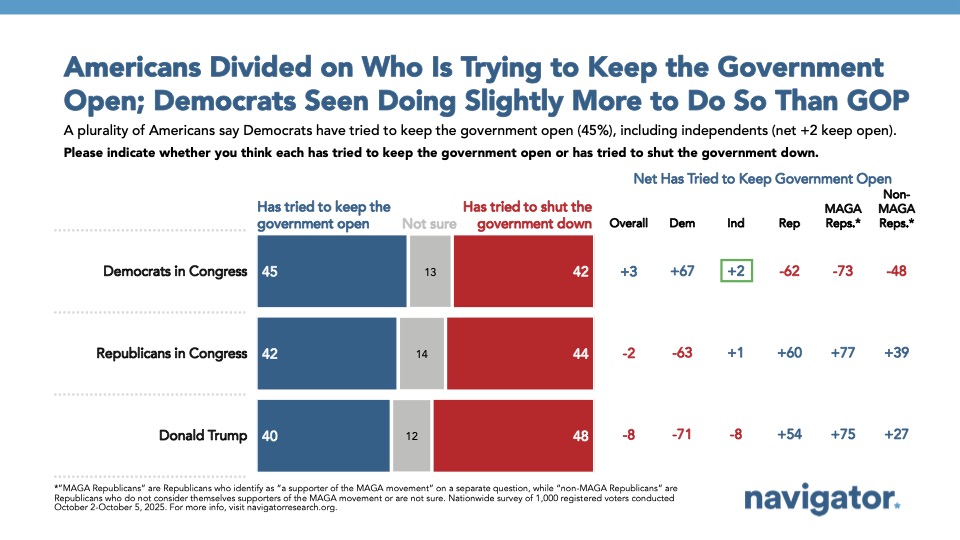
What: Health Care
Health care cuts and higher health costs are the most concerning on Trump and Republicans’ approach to the shutdown.
- Trump and Republicans in Congress are using a government shutdown to try to force through their budget which includes massive cuts to programs like Medicaid and the Affordable Care Act. This budget will double health care costs for millions of Americans and kick millions off of their health care – all to pay for Republicans’ massive new tax breaks for the rich and big corporations (47 percent find this extremely concerning, 62 percent say it is concerning overall); and,
- Trump and Republicans in Congress are using a government shutdown to try to force through their budget which includes massive cuts to programs like Medicaid and the Affordable Care Act. This budget will double health care costs for millions of Americans and kick millions off of their health care (46 percent find this extremely concerning, 59 percent say it is concerning overall).
Importantly, health care message framing dramatically shifts the context of the shutdown for Americans.
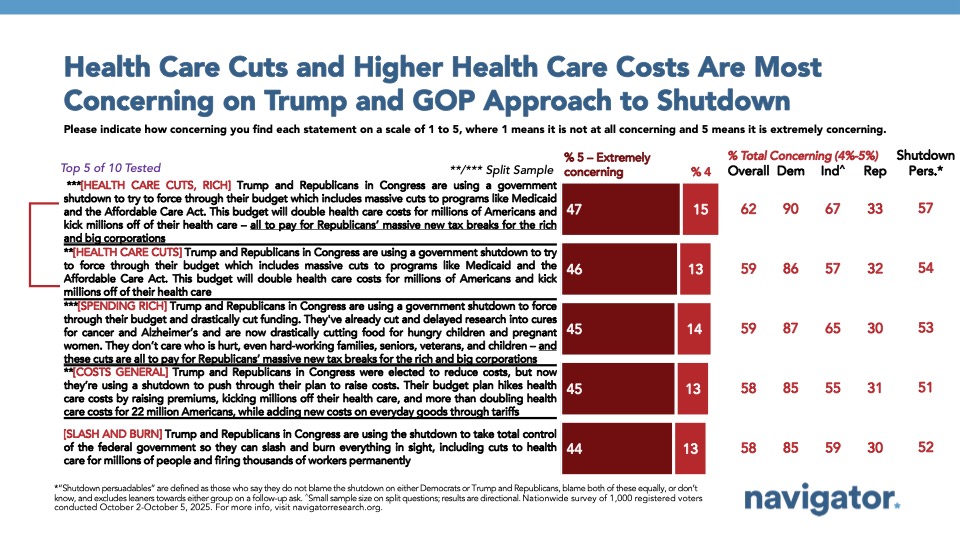
Why? To Pay for Tax Breaks for the Wealthy
The most effective attacks against Republicans in Congress emphasize that Trump and Republicans in Congress refuse to compromise on health care costs so that they can pay for tax breaks for the wealthy.
Trump and Republicans in Congress are to blame for the shutdown because they refuse to compromise and won’t pass a budget unless it takes away health care to pay for tax breaks for the wealthy. After they already cut Medicaid, they’re now trying to take away the tax credits millions use to pay for health care.
Trump and Republicans in Congress are using a government shutdown to try to force through their budget which includes massive cuts to programs like Medicaid and the Affordable Care Act. This budget will double health care costs for millions of Americans and kick millions off of their health care – all to pay for Republicans’ massive new tax breaks for the rich and big corporations.
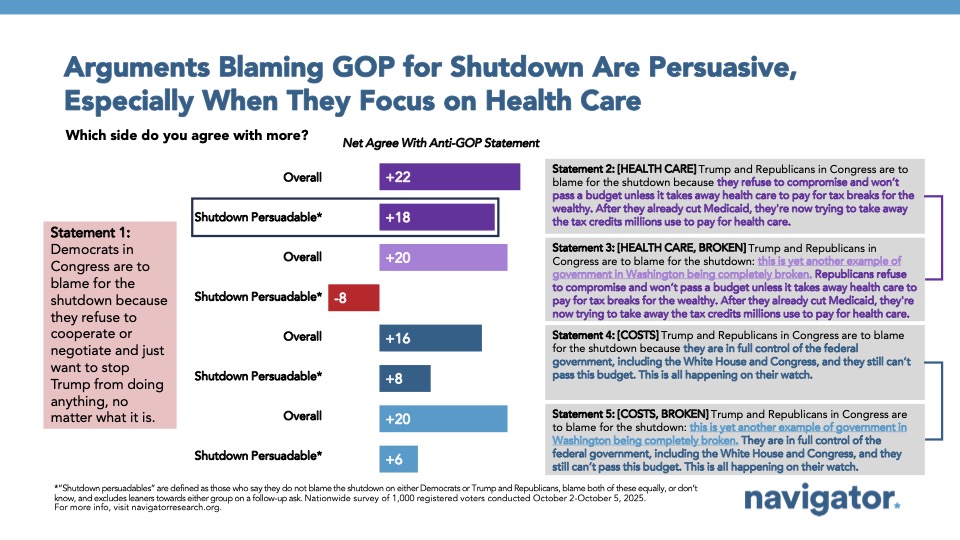
As our MAHA research shows, the current health care system is already expensive and inaccessible for people. Raising costs will add to the existing problems.
Trump and Republicans’ budget would more than double health care costs for 22 million Americans. Democrats say health care costs have already been skyrocketing, and so they are doing everything they can to stop health care costs from rising even more, at a time when tariffs are already driving up costs.
Why They Are Responsible
Finally, it’s critical to remind Americans that Donald Trump and Republicans in Congress are fully in charge of the government. By a 16-point margin, Americans believe that Donald Trump and Republicans are responsible for the shutdown because they are fully in charge of the government, compared to Democrats who refuse to compromise. Independents believe this by a 30-point margin.
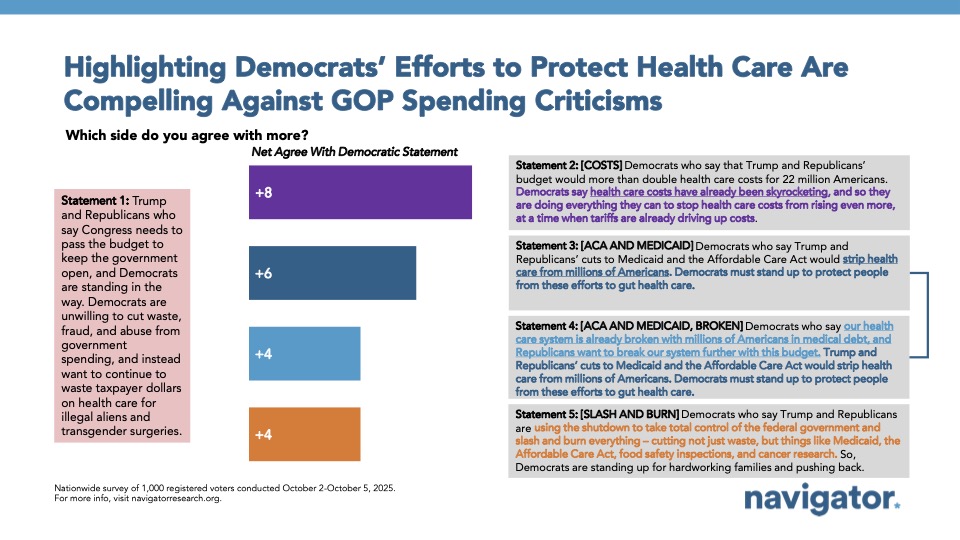
The Result: Republicans Even More to Blame
After messaging on both sides, Americans move from blaming Donald Trump and Republicans by 13 points to blaming them for the shutdown by 17 points.
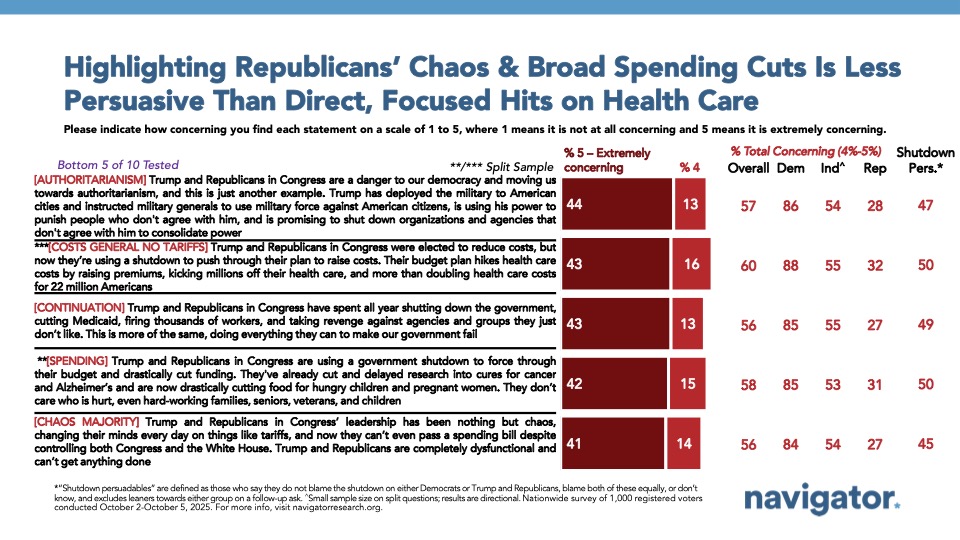
About The Study
Global Strategy Group conducted a public opinion survey among a sample of 1,000 registered voters from October 2-October 5, 2025. The survey was conducted online, recruiting respondents from an opt-in online panel vendor. Respondents were verified against a voter file and special care was taken to ensure the demographic composition of our sample matched that of the national registered voter population across a variety of demographic variables. The margin of error for the full sample at the 95 percent level of confidence is +/- 3.1 percentage points. The margin of error for subgroups varies and is higher.
